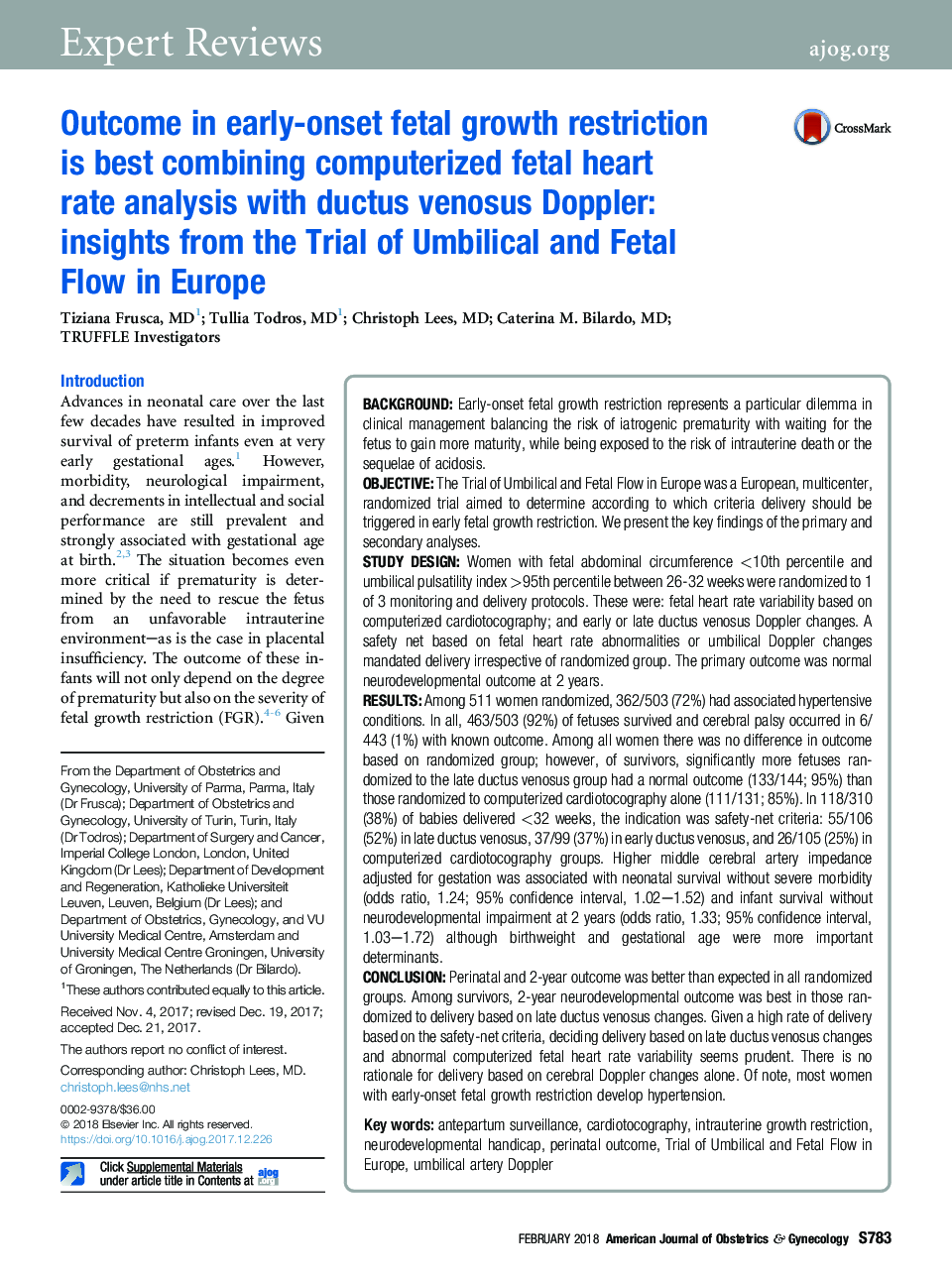| Article ID | Journal | Published Year | Pages | File Type |
|---|---|---|---|---|
| 8752815 | American Journal of Obstetrics and Gynecology | 2018 | 7 Pages |
Abstract
Perinatal and 2-year outcome was better than expected in all randomized groups. Among survivors, 2-year neurodevelopmental outcome was best in those randomized to delivery based on late ductus venosus changes. Given a high rate of delivery based on the safety-net criteria, deciding delivery based on late ductus venosus changes and abnormal computerized fetal heart rate variability seems prudent. There is no rationale for delivery based on cerebral Doppler changes alone. Of note, most women with early-onset fetal growth restriction develop hypertension.
Related Topics
Health Sciences
Medicine and Dentistry
Medicine and Dentistry (General)
Authors
Tiziana MD, Tullia MD, Christoph MD, Caterina M. MD,
